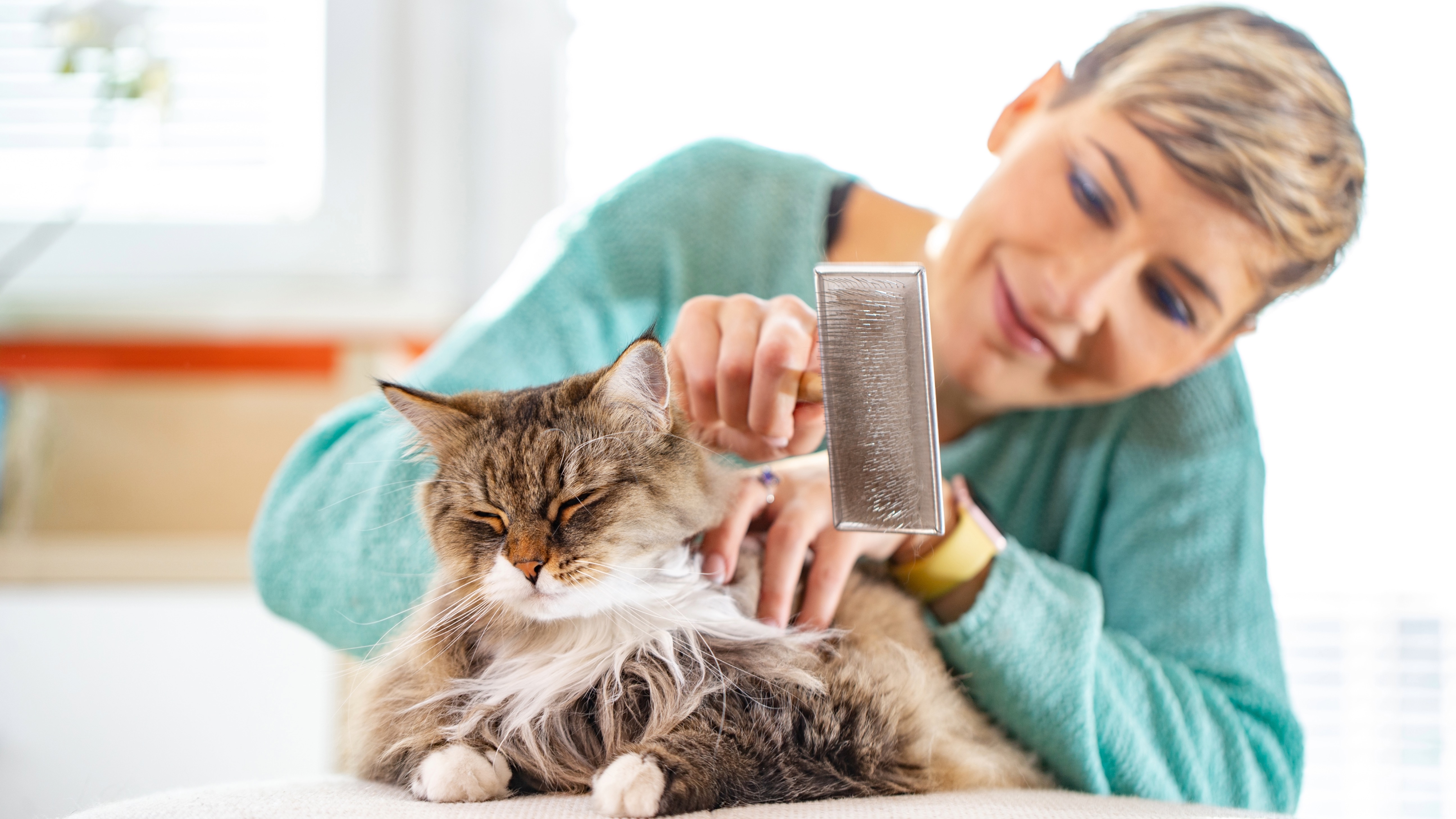
Do you groom your cat? Many cats — particularly those with longer hair — can benefit from a brushing. However, not all cats enjoy it.
You might have one of the best cat brushes ready to use, but if your cat isn’t a fan of being brushed it’ll make the whole process more complicated than it might be otherwise. Your cat might be scared of the brush, have had some negative past experiences with brushing, simply find it uncomfortable, or dislike being handled.
Despite this, you might not be able to avoid brushing your cat from time to time. After all, brushing your cat not only allows you to keep them tidy and prevent tangling and matting, but it can help you look for potential health issues, too.
So, what you can you do to make brushing a little more enjoyable for your kitty? Certified cat behavior psychologist Saba Sayyed, or A Cat Psychologist, has offered five tips on social media.
1. Start by scratching their head and chin slowly: For this part, you don’t yet need to introduce any combs or brushes. You’re simply getting your cat used to the physical contact.
2. Introduce the comb for five seconds on their head and chin: Sayyed explains that you should do this when they’re tired or resting if possible. “Stop before they get annoyed,” she adds, so make sure you aren’t putting the comb on them for too long!
3. Keep the duration short to begin with: Once they’re used to you merely introducing the comb, you can begin brushing your cats. Try keeping things to around five seconds at a time, again reducing the likelihood of your cat getting annoyed.
4. Give them a quick treat right after brushing for a few seconds: Don’t forget the treats! Using treats will help them make positive associations with being brushed and combed, so it’s a good idea to keep some next to you while training.
5. Use a comb made with wood or one with soft bristles: Here are the six types of cat brushes and how to use them. Ideally, these are the best combs to use on your feline friend. Remember, too, that it’s best to use a cat brush — brushes for human hair aren’t likely to be as effective, as they don’t reach the undercoat. A cat’s undercoat can get matted if it’s not brushed regularly, particularly when it comes to long-haired cats.
On that subject, you might find this vet's guide to brushing long-haired cats is useful. Whether you’re an experienced cat parent but you’re dealing with a cat who doesn’t like being brushed for the first time, or this is your first long-haired cat, there’s plenty of advice that may help.






